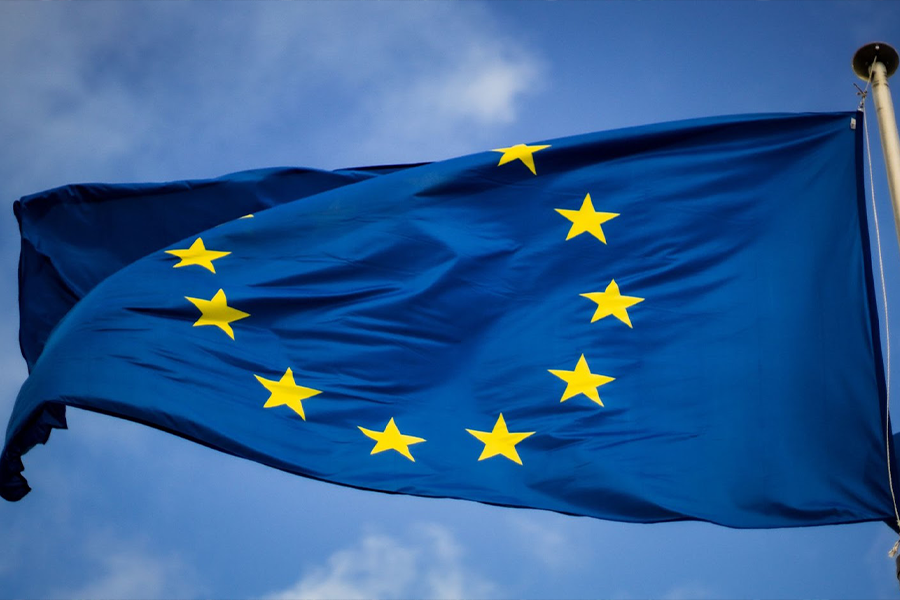The Regional Comprehensive Economic Partnership (RCEP) is a free trade agreement among 15 member countries within the Asia-Pacific region. Altogether, the nations account for approximately 30% of the world’s population (2.2 billion people), and around 30% of global GDP ($26.2 trillion), making the RCEP the largest trade bloc in history.
The RCEP is not just limited to the region of its primary membership, but its effects are felt across the globe. In this article, we’ll take a closer look at this landmark agreement, providing an overview of what it covers and what its objectives are.
Following that, we’ll look at the implications of the RCEP, not only for the Asia-Pacific region, but also for Europe. Analysis of this trade agreement will help cross-border retailers glean insight into what strategic opportunities lie ahead.
Table of Contents
Overview of the Regional Comprehensive Economic Partnership (RCEP)
The major objectives of the RCEP
The political and economic implications of the RCEP
Overview of the Regional Comprehensive Economic Partnership (RCEP)
The RCEP Agreement was formally signed on November 15th, 2020, at the ASEAN Summit, which was held virtually and hosted by Vietnam. It became effective on January 1st, 2022.
The parties to the RCEP Agreement
The RCEP is composed of the following 15 signatories:
- Australia
- Brunei
- Cambodia
- China
- Indonesia
- Japan
- Laos
- Malaysia
- Myanmar
- New Zealand
- The Philippines
- Singapore
- Vietnam
- South Korea
- Thailand
The Agreement incorporates the existing members of the 10-member ASEAN trade bloc and five other East-Asian countries: China, Korea, and Japan (sometimes referred to as ASEAN +3), and Australia and New Zealand (also referred to as ASEAN +5).
The RCEP has a mix of high-, middle-, and low-income nations. Five of the six biggest economies in the Asia-Pacific region are party to this Agreement — China, Japan, Australia, South Korea, and Indonesia. Mid-sized economies include Malaysia, Singapore, Thailand, New Zealand, Vietnam, and the Philippines. Several smaller economies are also signatories, i.e. Cambodia, Brunei, Laos, and Myanmar.
The projected value
It is projected that with continued economic growth, especially with regard to China and Indonesia, the total GDP of the RCEP membership could grow to above US$ 100 trillion by 2050. That will be nearly double the project size of Trans-Pacific Partnership (TPP) economies.
A 2020 projection shows that the Agreement could actually enlarge the entire global economy by at least US$ 186 billion. Peter Petri and Michael Plummer from the Brookings Institution have estimated that the RCEP has the potential of adding US$ 209 billion annually to global incomes, as well as US$ 500 billion to global trade by 2030.
The Asian Development Bank (ADB) projects that China, Japan, and South Korea will benefit the most from the Agreement, likely reaching gains of US$ 85 billion, US$ 48 billion, and US$ 23 billion, respectively. The ADB projection also shows that Malaysia, Thailand, Indonesia, and Vietnam stand to make significant gains from the RCEP.
The major objectives of the RCEP
Facilitate trade and investment
As a free trade agreement, one of the RCEP’s primary objectives is to establish a modern economic partnership so as to facilitate trade and investment between the participating parties. There is a particular focus on trade in goods and services liberalization across Asia as a way of developing a competitive investment environment.
On a practical level, the Agreement sets out to reduce tariffs and red tape in order to ease trade and market access. Included in the RCEP are unified rules of origin for all goods traded throughout the bloc.
These rules are intended to set common standards that stipulate that if RCEP member states process materials or goods that have originated from other member states, these materials are regarded as having originated in the processing country. Ultimately, this will serve to establish open and competitive markets.
Consolidate existing ASEAN +1 agreements into one trade agreement
A key driver that fueled the RCEP negotiations in 2012 was the need to bring together all the existing ASEAN +1 trade agreements into a unified one. What was problematic about the previous ASEAN +1 deals was that they had different levels of ambition based on the partners, and a number of them did not have crucial trade and trade-related commitments, such as digital trade or intellectual property rights.
Through the RCEP, Asia-Pacific countries have set out to integrate their economies and establish trade rules that are compatible without having the pressure of needing to make certain commitments to outside actors like the US. This is particularly true for the TPP, which was largely steered by the United States prior to the election of Donald Trump.
The economic implications of the RCEP
Implications for the Asia-Pacific region
From an economic perspective, the RCEP can be seen as a win for the participating entities. Based on ASEAN’s multilateralist framework, it has been able to foster trade cooperation among the region’s top economies. In fact, the RCEP actually marks the first trilateral free-trade agreement between China, Japan, and South Korea.
On the whole, it is seen as a win for the region as East Asian countries are able to accelerate the integration of their economies. In specific terms, the RCEP will be responsible for connecting up to 30% of the world’s people and output, and generating economic gains in GDP growth for the members to the tune of a combined US$ 100 trillion by 2050.
Regarding industries that stand to benefit from the RCEP, the automotive industry stands as one of them. The agreed-upon tariff reductions in the automotive sector mean that multiple types of automotive intermediate parts will gradually have import–export tariffs eliminated. This is good news for cross-border automotive retailers within the region.
Implications for Europe

There is potential for the shape of existing global trade patterns and rules to be upended by the RCEP, and for a reshaping of rules and frameworks to take place beyond the Asia-Pacific region.
The EU has existing trade connections with a number of RCEP signatories, with imports and exports of machinery products and automotive products being among the top 5 merchandise categories.
As the RCEP intends to facilitate trade and reduce trade costs among RCEP members, the result in some industries may be reduced competitiveness of European products, with trade having been diverted to other RCEP member states.
However, in the large scheme of things, Europe also stands to gain from the RCEP as the reduction of non-tariff barriers in the form of harmonization of information requirements for businesses will also enable a stable trade environment for European companies. In this vein, Petri and Plummer have projected that Europe could gain an annual net income increase of an estimated US$ 13 billion by 2030 from the RCEP.
European companies and industries that have well-established intra-Asian supply chains stand to gain significantly, particularly the electronic machinery, automotive, and textile sectors. There is optimism within the textile industry, as expressed by the European Textile and Apparel Confederation Director, that the integrated Asian market will potentially increase demand for high-end luxury and high-tech textile materials from the EU.
Ultimately, the greater implication is that the RCEP marks an economic decoupling of East Asia from the extra-regional entities. But while there will be the consolidation of a new, far-reaching ASEAN+ trade bloc, win-win benefits can still be achieved with other parties outside this region in a number of industries.
Conclusion
The launching of the RCEP bears great economic and political significance for not only the Asia-Pacific region but the world at large. This article attempts to give an overall picture of the structure, scope, and implications of the RCEP as a way for cross-border traders to understand expected economic developments and how they will affect trade among the different regions.
As seismic shifts are taking place in global trade patterns and rules, it is imperative for international businesses to understand the implications of developments such as the reduction of non-tariff barriers and the liberalization of trade in goods and services across Asia that will result from the RCEP.





 বাংলা
বাংলা Nederlands
Nederlands English
English Français
Français Deutsch
Deutsch हिन्दी
हिन्दी Bahasa Indonesia
Bahasa Indonesia Italiano
Italiano 日本語
日本語 한국어
한국어 Bahasa Melayu
Bahasa Melayu മലയാളം
മലയാളം پښتو
پښتو فارسی
فارسی Polski
Polski Português
Português Русский
Русский Español
Español Kiswahili
Kiswahili ไทย
ไทย Türkçe
Türkçe اردو
اردو Tiếng Việt
Tiếng Việt isiXhosa
isiXhosa Zulu
Zulu